Something to tide you over our epically wet drought.
A couple of days a week I wander to work through the back-streets of Chelsea, between the Kings Road and the river. They must be some of the most charming streets to be found in any city; pricey charm though – I can hardly imagine how much properties must cost down there. And yet once upon a time these streets housed the impecunious. A plaque on one house I pass marks the former home of critic and poet Leigh Hunt (bottom).
He’s not remembered much today except as a friend of Shelley, Keats, Byron, Hazlitt and other Romantic writers of the early-19th century. Otherwise what’s most immediately striking about his career is the gusto with which he threw himself into writing, editing, and publishing (not to mention, fatherhood – he had ten children, including one Percy Bysshe Shelley Leigh Hunt; it’s as if he suspected that he’d be remembered most of all for his friendships). He produced poetry, criticism, essays, autobiography, fiction and translations whilst editing a succession of sparky, if often rather rackety, publications. One can well imagine him blogging if he were around nowadays.
Anyhow, in recent weeks I’ve tended to walk past his old house with shoulders hunched and collar up, taking care not to slip on blossom-covered paving. As we know, most English poetry is an excuse to write about the weather so it’s inevitable that Leigh Hunt had a go. Here’s his simple and gorgeous enjoyment of something that we’re currently mostly cursing:
A Night-Rain in Summer
Open the window, and let the air
Freshly blow upon face and hair,
And fill the room, as it fills the night,
With the breath of the rain’s sweet might.
Hark! the burthen, swift and prone!
And how the odorous limes are blown!
Stormy Love’s abroad, and keeps
Hopeful coil for gentle sleeps.Not a blink shall burn to-night
In my chamber, of sordid light;
Nought will I have, not a window-pane,
‘Twixt me and the air and the great good rain,
Which ever shall sing me sharp lullabies;
And God’s own darkness shall close mine eyes;
And I will sleep, with all things blest,
In the pure earth-shadow of natural rest.
Leigh Hunt also happens to have celebrated this month of May and with it, writing, reading and books:
May and the Poets
There is May in books forever;
May will part from Spenser never;
May’s in Milton, May’s in Prior,
May’s in Chaucer, Thomson, Dyer;
May’s in all the Italian books:–
She has old and modern nooks,
Where she sleeps with nymphs and elves,
In happy places they call shelves,
And will rise and dress your rooms
With a drapery thick with blooms.
Come, ye rains, then if ye will,
May’s at home, and with me still;
But come rather, thou, good weather,
And find us in the fields together.
Personally, I hope we all soon find us in the fields enjoying good weather, drought or no. Another, more recent, English poet of the seasons, Philip Larkin, would have agreed that rain at this time of year is a bit of a downer. Wasn’t this rural couplet a favourite?
Hoorray, hoorray! It’s the first of May
Outdoor fucking begins today!
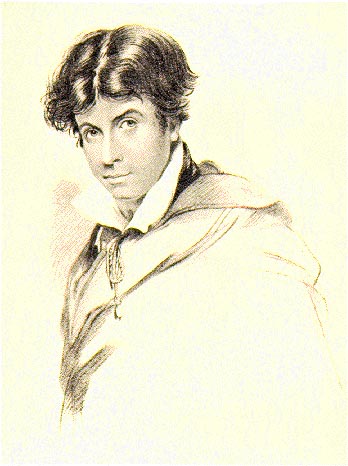
The photo at the top is from here.

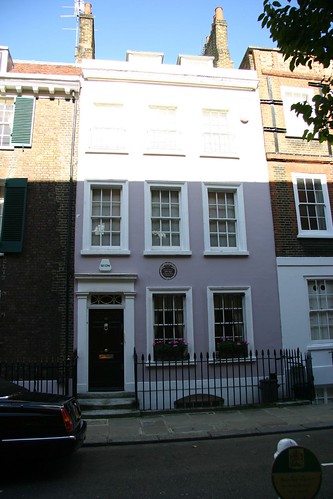
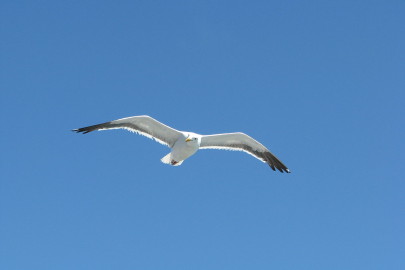
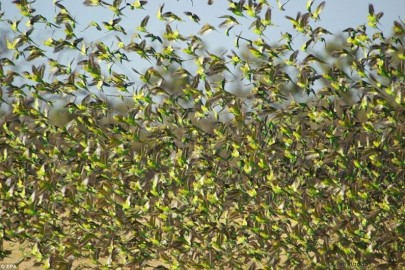
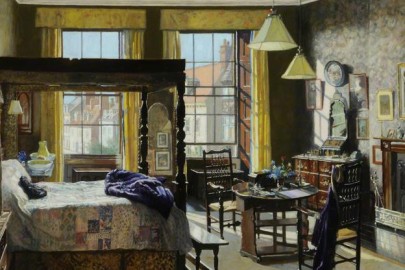







Nice stuff!
Leigh Hunt is also remembered as the model for the parasitc man-child Skimpole in Bleak House – a cruel caricature perhaps, but apparently it was instantly recognisable to those who knew the man.
That’s interesting, as Skimpole is one of Dickens’ most deplorable characters. Starts as amusing and by the end you realise he’s a monster.
And talking of Nige and rain and poetry, check out Geoffrey Hill on rain.
Leigh Hunt was nicknamed The Cockney King according to Denise Gigante in The Keats Brothers: a life of John and George, in which Leigh Hunt figures as an early patron of the poet.
I’ve ordered a bio of LH second-hand on Amazon. What to make of him? Any bio suggestions gratefully received.
I spent my childhood in Chelsea, which is (therefore?) my favourite part of London. It saddens me to go there now and, looking through the windows, see that it is no longer a place where normal, not especially wealthy families live, but some kind of branch of Celebrityville, with a sub-section devoted to Russian kleptocrats. It’s not the kind of exile anyone would/could/should feel sorry for, of course, but all the same I regret knowing I’ll never be able to afford to live again in the area where I first learned to ride a bike.
I have conflicting feelings about this phenomenon as one of the reasons I enjoy London is its cosmopolitanism. But it’s partly this that’s driven prices into the stratosphere and resulted in more social segregation.
I see your point. But don’t we have to accept that London is in a constant state of flux? I bet you anything the Bohemians who lived in Chelsea in the 1920’s resented the arrival of the smart, young crowd- wasn’t this the time when enterprising people started converting the redundant mews’s into chi-chi mews cottages? And the river and boat people certainly resented it when their boat yards, sail lofts, and cottages were demolished to make way for the extension of the Chelsea Embankment in 1874- in effect linking Chelsea village with the rest of London for the first time, but also destroying their way of life.
It’s the same thing with Notting Hill, Islington- and now Spitafields and parts of the East End. In the 80’s I used to live in Notting Hill, and people’s eyes would glaze over in horror when they heard where I lived. London’s a bit like New York- it changes rapidly.
Fascinating point about how the Embankment linked Chelsea to the rest of London and changed it. Never appreciated that before.
Regarding the character of London as a whole, I suppose the flux has worked in one direction in recent decades, in that just about everywhere has become more expensive. This is obviously a good thing as on balance it means the city’s getting wealthier.
However, as we’ve discussed on these pages before it’s not an unalloyed good. A friend visited me in Chelsea today and remarked how difficult it was to get an ordinary cup of tea down here by the river. No caffs, you see…
Personally, I find the interesting bits are now quite a bit east of here.
I’ve just realised people like Ian Sinclair are currently complaining that the Olympics will do to the East End something of what the Embankment did to Chelsea…
Absolutely. If I was just starting out in London for the first time and looking for digs- the East End is where I would head for…
As much as I am a “fan” of Mr Sinclair and All His Works, I’m not sure that he is right. The Greek Olympic site is now derelict and unused. I suspect that London as a whole will benefit from the huge numbers of new visitors, but I don’t see the East End going the way of Chelsea…yet…there is still a long way to go before that happens.
The social history of Chelsea is interesting. If you have a look at Booth’s Poverty Map, you will see Cheyne Walk in yellow (the highest strata of society), but the surrounding area is a complete mix of pink, mauve and black, showing how dangerous slums (police no go areas) could be found very close to the grandest houses.
I’m also fascinated by that area on the river front; where Whistler painted and Walter Greaves lived. In early photographs it’s a jumble of boatyards, sheds, sailing lofts, hovels, warehouses and the like- all swept away by the extension of the Chelsea Embankment.
Interesting. I suppose a remnant of Chelsea’s mix of classes is the Worlds End estate. Along from LH’s house is the site of the Chelsea Pottery, so there must have been a mix of uses as well as classes in the Cheyne area.
Those Booth’s maps are fascinating. I was at the Museum of London on the bank holiday (rain stopped play) and they have an interactive room devoted to them. We had a good look at our part of Islington, which is currently a social mix and, if anything, was more so then. Smart middle class squares (in dark red) immediately adjacent to (black) ‘semi-criminal’ areas (to use Booth’s blunt label).
I like the way Booth described the black areas: “The lowest class, vicious, semi-criminal”…it does make you think. Until recently, that SW10 World’s End bit (near the Chelsea Gasworks and Lots Road) was relatively grotty.
But what is Chelsea? That’s a very good question. Isn’t Chelsea proper that stretch between the Kings Road and the river- ie that villagey area near Tite Street and Chelsea Old Church? Walter Greaves, Oscar Wilde and Christina Rossetti come to mind.
The former Queens Elm pub (used as a location in Losey’s “The Servant”) was formely described as being in Fulham- I reckon that estate agents would now call this “Chelsea”.
The location I find really confusing is Kensington. It seems everywhere from Queens Park to Chelsea can be called Kensington, with lots of places sandwiched in between.
I suspect the original village of Kensington was centred around what is now Kensington High Street. Isn’t that Kensington proper? “North Kensington”, I think, was the name the developers gave to the new stucco’d terraces of Notting Hill. Is there an East Kensington? Or should that be Knightsbridge?
Another point- “Knightsbridge” is really just that road that runs from Number One, Piccadilly to the ‘orrible new Candy & Candy development; not an area. Harrods is really in Brompton; although I seem to remember that they persuaded the Post Office to extend the SW1 postcard to include Harrods (purely for snobby reasons), when in fact they were really in SW7.
Fulham is another area which seems to cover a multitude of sins. It has shrunk in size. I have a feeling that in the 60’s, parts of South Ken, Earls Court and even Chelsea, were considered to be in Fulham. And is Parson’s Green, in Fulham? It’s all very confusing…
A friend of my mother had a husband who was very grand – in the 20 years they lived in SW10 her mother in law could never bring herself to write anything but sw3 on letters addressed to their house. She could not acknowledge that a member of her family could really have chosen sw10